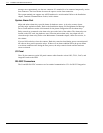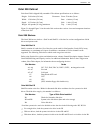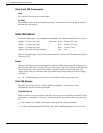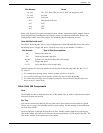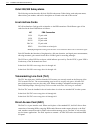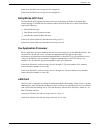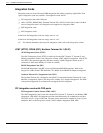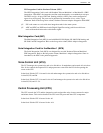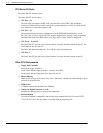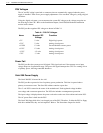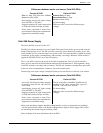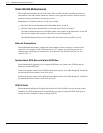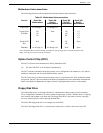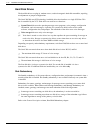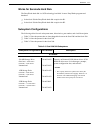
2-10 Installation and Maintenance Volume
Octel 200/300 S.4.1
PB60019−01
CPU Serial I/O Ports
The Octel 200 CPU has three ports.
The Octel 300 CPU has five ports.
- CPU Port − J1
The first serial port supports an RS−232C, auto-baud rate select, DB25, 300−38,400 bps
connection. Database access task is used for the system terminal port, which is accessed at the
rear connector J1 or the front connector SP1.
- CPU Port − J2
The second serial port can either communicate with the DID/E&M Trunk Interface via an
RS-232C cable or can be used for RS-232C adaptive i ntegration for mes sage waiting and pass ing
call information from some PBXs. Refer to the Integration volume, Adaptive Integration.
- CPU Ports − J3 and J4
The Octel 200 CPU provides relay closure contacts for major and minor alarms on port J3. The
Octel 200 does not have port J4.
The Octel 300 third and fourth ports, J3 and J4, are reserved for future use.
- CPU Port 5
The Octel 300 CPU provides relay closure contacts for major and minor alarms on port J5.
Other CPU Components
- Floppy Disk Controller
Controls the floppy disk drive.
On the Octel 200, the floppy disk drive is located on the PSU.
On the Octel 300, the floppy disk drive located in slot B5.
- Battery Backup
Backs up the message server time-of-day clock. The battery can keep the clock running for up to
one week if the power fails.
- TDM Switch
A TDM crosspoint switch controls the TDM bus.
- Analog−to−Digital Converter (A to D)
Monitors the message server’s voltages and temperature.
- Internal Modem
The internal modem is compatible with the following standards: Bell 103/212A and CCITT
V.22/CCITT V.22 bis. One per cabinet, accessible from any telephony port.



